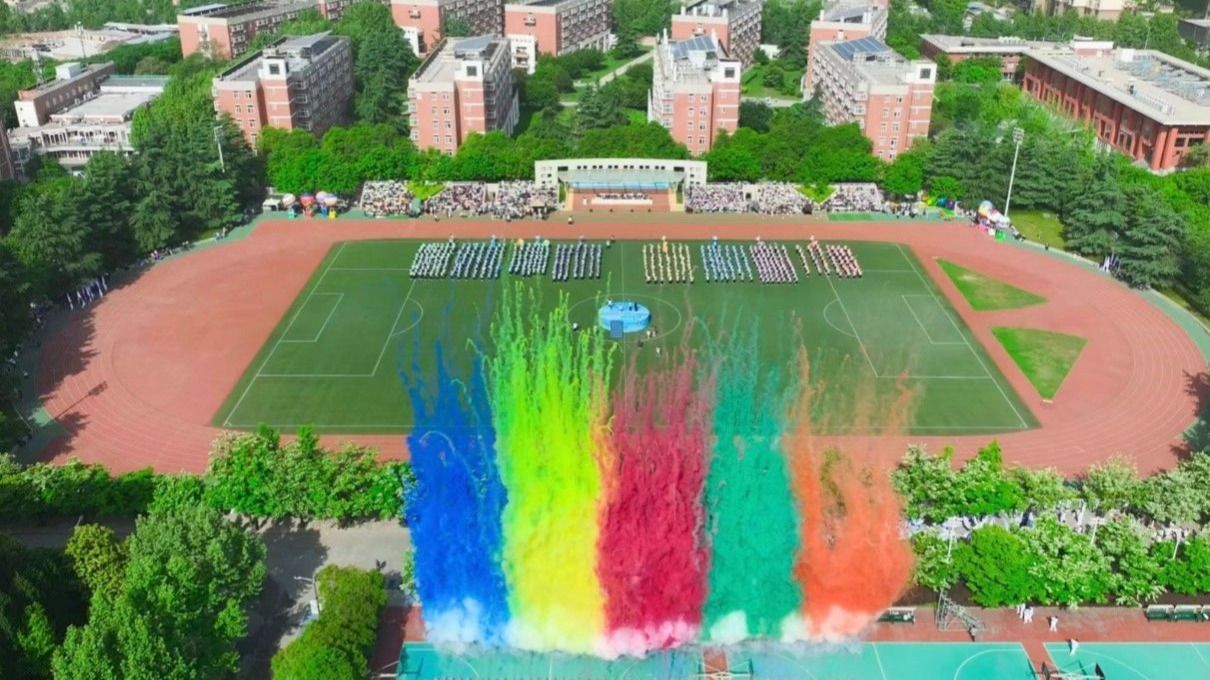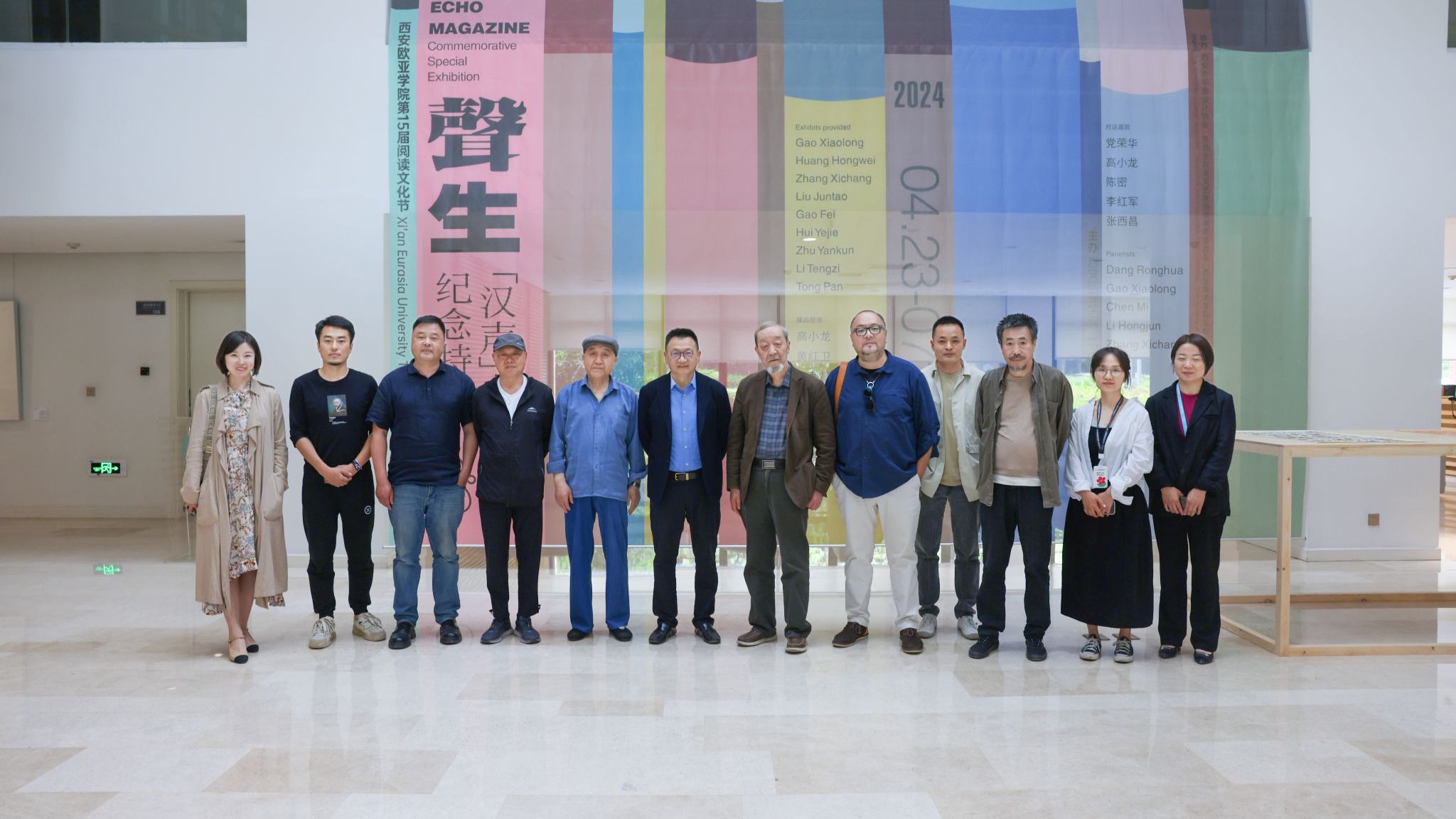Editor's Note: On December 11-13, the 7th Annual Meeting of the China Education 30 Forum was held in Beijing. Professor Hu Jianbo, founder and chairman of Xi'an Eurasia University, shared a report entitled "Rethinking the Reform of Student Affairs at Higher Education Institutions — Inspiration from the Differences between China and the United States in Epidemic Prevention and Control" online at the sub-forum of "University Education Forum: Exploration of Innovation in Higher Education". He talked about the changes in Xi’an Eurasia University's student affairs in the past ten years and the shifts in his own educational thoughts based on the differences in educational concepts and cultures between China and the United States. Now I would like to share with you this report:
Hello, everyone!
Compared with the previous Westlake University and NYU Shanghai, Xi'an Eurasia University has a history of 25 years. As a school for ordinary students, it stays committed to exploring educational reform.
About 12 years ago, we tried to conduct major reforms on student affairs, including a change in the opening ceremony of the student sports meeting, which added a group exercise performance formation based on the previous simple entry of students parading in formations. About 7,000 teachers and students from different schools of the university took part in the creative rehearsal and their performance was quite grand and heated. However, before and after the sports meeting, my Weibo account was packed with complaints from our students: Why should I go to the parade formations? Why should I go to the group exercise performance formation? What did the grand sports meeting have to do with me?
These complaints made us think about the management of student affairs: Did students really need a grand opening ceremony of the sports meeting held under the great support of all schools of the university? Did large student activities interfere with the education and teaching activities of each school? What kind of campus life experience did students need?
Xi’an Eurasia University had 20,000 students. Like peer colleges and universities in that period, it also had a high teacher-student ratio. There are three characteristics in the management of student affairs: Schools need to pay attention to both teaching and student affairs, but managers find it difficult to focus on teaching due to the complicated task. There is a huge gap between various student affairs that the university pays attention to and the actual needs of students, so even the mother-like counselors cannot offer help for the growth of students. Students participate in teaching and various activities as per fixed classes, so there are few opportunities for cross-major learning and cooperation and a lack of platforms for their personalized development. These problems are common phenomena in the Chinese second-tier universities, so we began to seek help from foreign education experience.
We begin to study the internal logic between the development of American higher education and its student affairs management by learning Arthur M. Cohen's The Shaping of American Higher Education. According to the development characteristics of American higher education in different periods, since the founding of Harvard in 1636, the development of student affairs can be roughly divided into the following stages:

(Figure 1) The Development Process of Student Affairs in American Higher Education Institutions
From 1636 to 1890, the parental system was replaced, strict discipline was emphasized, and student and academic affairs were integrated.
From 1890 to 1937, The Student Personnel Point of View was promulgated; student affairs were separated from academic affairs; the functions of student service, consultation and management were gradually improved; student affairs management became a professional profession.
From 1937 to 1968, with the development of the consumption relationship between students and universities, student affairs management entered the era of "student service".
From 1968 to 1994, the theory of student development became the guiding ideology of student affairs management, which clarified the mission of "student affairs in being able to directly promote students' learning and development and directly serve higher education" and that student affairs staff were "educators for students' development".
Since 1994, with the advent of the Internet era, student affairs management has been becoming more professional, diversified and informationized.
Compared with the development stages of student affairs in American higher education institutions, we find that Chinese higher education institutions, especially private ones, have basically similar development processes. The priorities of Xi’an Eurasia University from 1995 to 2005 were expanding the scale, recruiting students and raising funds. The main responsibilities regarding student affairs were: managing students well and ensuring that no troubles will happen. In 2005, Xi’an Eurasia University was successfully upgraded to an undergraduate school. It began to pay attention to the improvement of educational and teaching quality, and put forward a "students-centered" educational concept. From then on, there was a shift from student affairs management to service, but the degree of specialization was insufficient, the service quality was poor, and the degree of satisfaction was low.
Since 2012, our student affairs management team has successively investigated and learned the student affairs management experience from higher educational institutions in Taiwan and Hong Kong in China and Singapore and Europe and the United States, and has been ready to launch reforms. During this period, the views of two scholars enlightened us a lot. One is John Dewey, who believes that on the one hand, education should meet the development needs of various social systems by training various types of talent; on the other hand, education should promote the all-round development of human beings and realization of their self-worth. The other is Jürgen Habermas, whose view is as follows: to some extent, the two concepts of 'socialization' and 'education' are the same. There is no essential difference between the two. Education is the socialization of human beings.
Under the guidance of such educational philosophy, and in combination with the research on many benchmarking cases, we have decided to carry out the "community system" reform on student affairs management. This reform has the following characteristics: it defines the student affairs concept of "centering on students and improving students' campus life experience"; separates student affairs from academic affairs, enabling their professional development; regards students' living area as an important base for conducting student affairs and strives to form a social community that crosses the discipline boundaries; guides students to dominate informal learning through association and campus cultural activities; promotes the flattening of the organizational structure, the professionalization of student affairs staff and the informatization of management methods.
In combination with the talent training objectives of Xi’an Eurasia University and according to the different cultural interests of students, we have built 8 youth communities, including Drucker and Confucius Youth Communities. Every dormitory gathers students of different disciplines, which is conducive to strengthening their understanding of other majors and cross-disciplinary cooperation. Communication and interaction are promoted among communities through competition and cooperation activities such as sports leagues, debate competitions and reading clubs. The student teams also have access to the rights of organizing university-level activities, who can obtain the qualification through competitive bidding. When students become the main body of these informal learning tasks, their sense of participation and responsibility will have been awakened, their creativity, leadership, expression abilities and thinking skills effectively stimulated, and their perception of art and humanistic quality also imperceptibly improved. In addition, student affairs personnel can turn to attach more importance to services and guidance apart from the handling of a small amount of management work. They will become motivators and partners supporting the students' growth.
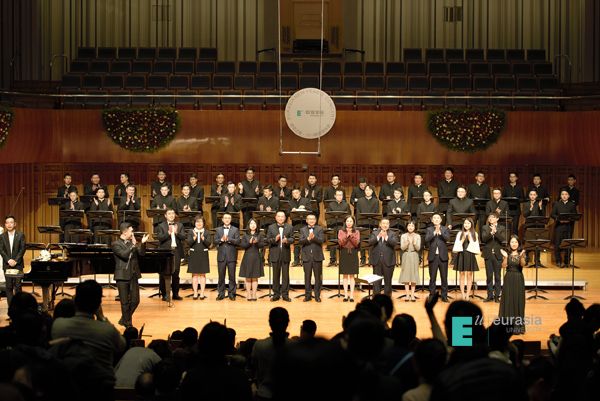
(Figure 2) 2019 New Year Concert
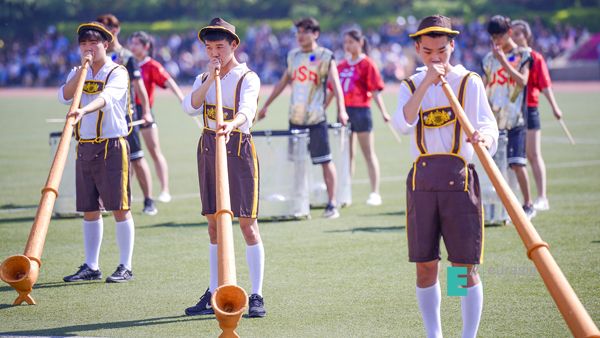
(Figure 3) 2018 Spring Games
Now, we also hold a grand opening ceremony for the sports meet every year, with each ceremony still participated by around 7,000 teachers and students. However, because the participating students represent various communities and associations and the contents displayed are all related to their interests and specialties, the participation opportunities are obtained through their active application and endeavor. "Creating big events with partners of similar interests" has become something particularly meaningful. The burden on each school and department has been reduced, and I have not received any more complaints in this regard.
When the work content of student affairs changes, it becomes particularly important to make an appropriate spatial match. In 2016, we invited the renowned architect Liang Jingyu and his team to design and build two informal learning spaces called the Student Living Room integrating student consultation, service, learning, communication and fitness on the basis of the original four student apartments in the north district. In 2018, French designer Steven cooperated with Liang Jingyu's team to build the third Student Living Room in the four student apartment areas in the south district. There are cafés, gymnasiums, study centers and convenience stores in the Student Living Room. Students can communicate and study in the Student Living Room, and the community's student affairs staff members also work there.

(Figure 4) Student Living Room in the North District
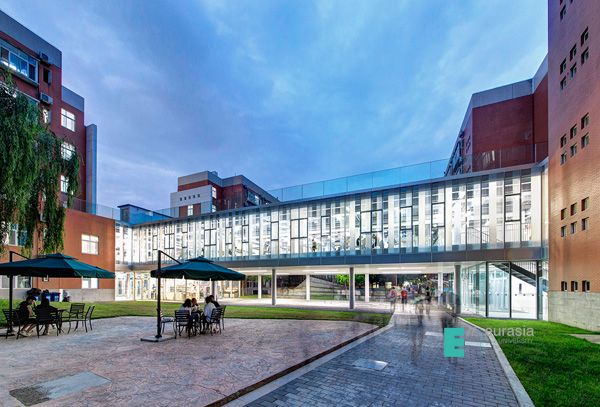
(Figure 5) Student Living Room in the South District
At present, the community system has become an important part of Xi’an Eurasia University's talent cultivation efforts. After the students are enrolled, the School of General Education is responsible for teaching the general courses and Eurasia University's DNA courses. Each school will impart specialized knowledge and provide practices for students of corresponding disciplines, coupled with informal learning scenes created by associations and communities. This combination of in-class knowledge penetration and out-of-class activities promotes the all-round development of the students and helps them realize self-worth.
This series of effective reform actions have increased the satisfaction of students and the recommendation of alumni to Xi’an Eurasia University year by year. However, new problems have also emerged. In the process of community system operation, we followed the example of American universities to divide the original business contents of the schools into two categories, namely academic and academic affairs respectively. Academic affairs are still managed by the schools and student affairs are managed by communities. Most of the original student affairs personnel turn to engage in student affairs management work in the communities, while a few stay in the schools for other special affairs such as high-quality internship, industry-university cooperation and career guidance. This has led to the vacancies of teachers in academic supervision and teaching assistance in some schools, which requires full-time teachers and academic tutors to step into the void.
With the reform of education and teaching in various schools entering a deep-water zone, teachers are indeed unable to address too many management affairs. In addition, students have long been accustomed to being urged to study in K12 phases, counting on their parents at home and the head teachers at school to supervise their study. When they start to study in the university, without the guidance of head teachers and the fixed classrooms, they may encounter such problems that "I don't know who I can ask for help when I encounter difficulties". Moreover, the students "feel bad" because there is no external force in the university to urge and motivate them to study.
It is known that the graduation rate of American undergraduate students in 6 years is only 60%, while that of undergraduate students in Chinese universities remains above 90%. I used to reckon that this was due to the lax academic standards in Chinese universities. My thoughts have changed now. Compared with American universities, Chinese universities are stricter in student management, which is proved to be effective in improving the graduation rate of students. Under the existing system, can the graduation rate of Chinese university students be reduced? Many children from average families have been admitted to universities through their struggle in high schools. The question is that the proportion of credit transfer between universities is extremely low. It is unlikely for students to transfer universities once they are admitted to a certain university. If a student drops out of school due to poor academic results, it will be hard for the student to be admitted to another university in the future. Therefore, it is really not feasible for us to simply follow the example of American universities.
The COVID-19 pandemic broke out worldwide in 2020. We have also gained inspiration from the different strategies and achievements of China and the United States in coping with the pandemic. During the fight against the pandemic, China has established a command system in which the central and local governments assume their respective responsibilities, coordinate and cooperate with each other and operate efficiently. The Chinese people are also very cooperative with the government's various measures. These joint efforts lead to good results in pandemic prevention and control. By contrast, the U.S. Federal and state governments fight the pandemic separately. The Trump administration's early cuts in the public health care budget and the excessive marketization of the citizen health care system have all weakened the ability of the U.S. to fight the pandemic. In addition, the weak awareness of pandemic prevention and control among the American people and too much emphasis on privacy also make it difficult for the U.S. to follow the infection tracks.
What is the revelation for us? We should promote education based on the actual situation in China. We should not only learn from foreign advanced experience but also maintain our own advantages. Specifically, in terms of student affairs, joint efforts and coordination should be made in student management, student development and student service.
It is now an era of universalization of higher education. People receiving higher education have changed from a very small number of elites to a small number of people and then to the general public. It is impossible to achieve such revolutionary transformation without efficiency, reasonable management and standardization. In recent years, we have insufficient management over student affairs. We attach importance to giving full play to the personalized characteristics of students but fail to pay attention to the requirements and constraints on students' basic learning behaviors and habits. In view of the current problems, we have begun to re-demonstrate the balance between students' personalized development and the university's management constraints. Manpower should be appropriately added to the student affairs management teams of schools so that they can become the dispatched offices of the Student Development Office without increasing the burden and tasks of these schools on student affairs management. Through target management and information technology, efforts are made to strengthen the supervision and guidance of students' learning process and effects.
Chinese colleges and universities generally lack awareness of student service. Most colleges and universities only have weak student living facilities, service facilities and service support systems. In the past 7 years, we have gradually established all the student service systems. Our student service facilities are still being further improved, and the existing restaurants are being transformed to be equipped with more complex and diversified functions. Through interesting design, functions including bookstores, cafés and yoga rooms are added to the original space. After the dining peak, it can be used as space for students to learn, communicate and carry out activities. We also invited DCM, Australia's largest design company, to design a new high-rise student apartment. Cutting-edge concepts of the international student apartment are adopted. From room design to public space configuration, the design concepts have followed the educational idea of promoting the socialized development of students, showing many highlights. When completed, it is likely to become one of the best student apartments in China.
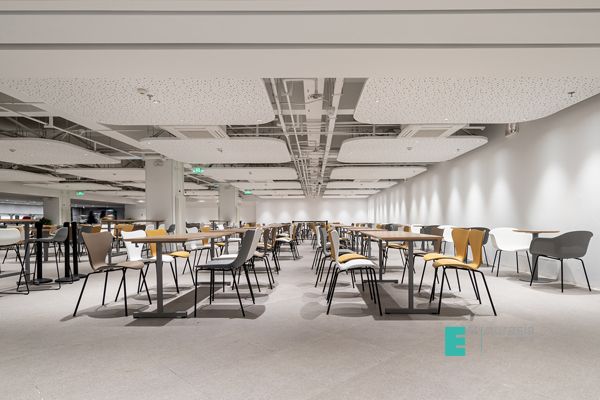
(Figure 6) Renovated Restaurant Building

(Figure 7) Effect Diagram of the High-rise Student Apartment in the West District
These are our troubles and explorations during the reform of student affairs management. Thank you.




